Team building and content creation are equally important for successful radio, Hamish & Andy’s executive producer Sam Cavanagh says.
In an interview with Craig Bruce for the Game Changers: Radio podcast, the man behind Hamish Blake and Andy Lee, who got into radio even though he was a non-radio listener, explained how to manage both the content and the culture of a show. “It’s about having really honest conversations with each other.” The content side is about guiding creativity: “Great producers see really good ideas in other people, and know how to bring out the best in them.”
“The first radio show I was a fan of”
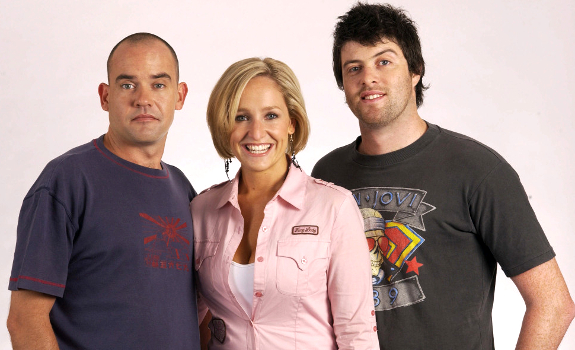
Sam Cavanagh appreciates the ‘anti-radio’ approach of The Shebang show (image: News Corp)
Accelerate your learning process
Sam Cavanagh’s radio career began when Jules Lund, who he had met through the Reach Foundation when they were both 15, asked him to help produce his weekly late night show on Fox FM in Melbourne. The criminology student “hadn’t even listened to FM radio”, but quickly developed an interest. “We treated it like it was the most important thing in the world. I remember Jules just writing pages, and pages, and pages of scripts. We approached it absolutely fanatically.”
Just 8 months later, Cavanagh was offered position as junior producer for Tracy & Matt in the Morning with Tracy Batram and Matt Tilley for 32,000 Aussie dollars a year. The 22-year old was stunned and said ‘yes’ without thinking for a second, even if he had never listened to any morning show before. Luckily, he would find a great mentor in Melanie Murphy, who taught him about radio production.
Cultivate your team spirit
He also got a warm welcome from the show’s main host: “I had a blonde, bleached mohawk, because I was a bit of a punk, and Matt Tilley had come to work. He had sprayed a blonde mohawk in his hair, and said: “Today is Welcome Sam Day, so I decided to get the same haircut as you”. I was blown away. He is the star of the show; I’m the absolute shit kicker, and he’s gone through that effort for making me feel so welcome.”
Cavanagh recalls thath this is something Matt Tilley always did: “He would go extraordinary lengths to make the team feel valued.” He says that he and Hamish Blake, who was a writer on the show back then, later applied that lesson within their own team as well. A few years after joining Tracy & Matt in the Morning, the freshman producer had to develop himself quickly when he took over Melanie Murphy, who took some time off.
Forget your career planning
What I find interesting, is that both Sam and Hamish & Andy are saying the exact same thing about their early days in radio. They had no specific expectations, and just tried everything that could be fun: “I’ve never really sat down and planned out my career; my philosophy has been much more: take every opportunity, and make the most of it.”
Cavanagh then got a senior role an executive producer on The Shebang, hosted by Marty Sheargold with Fifi Box and Byron Cooke. “That was the first radio show I was a fan of. It was so different. Marty is so great at using pause and dead air; all things that most content directors and producers get terrified of, and that just made you lean into the radio.”
“None of it seemed like work”
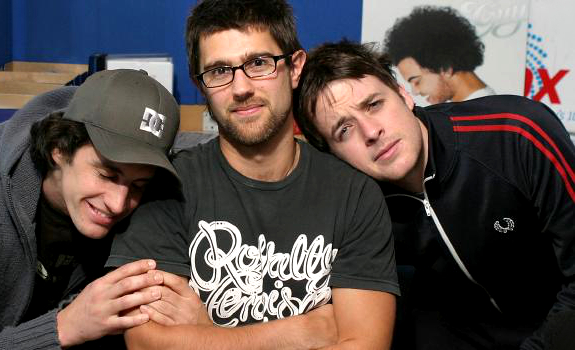
The pursuit of fun instead of money led this team to great success (image: News Corp)
Improve your personal attitude
Unfortunately, The Shebang came to an end before it could reach its full potential. “Marty had a really hard time dealing with station management. He was a bit of a tortured soul back then, as many performers are. We had a content director he didn’t respect; he found it really hard to be the performer he was and take direction or feedback from that person.”
Cavanagh remembers that although he and Sheargold had a pretty good working relation, “it was super dysfunctional — but if a lot of the great shows are dysfunctional”. In reference to this classic conflict between talents and programmers, he says: “Marty’s funny because he’s different to everyone else. On one hand, you’re rewarding him for that, and on the other hand, you’re saying: please toe the line, fit in, and do what we ask you to do.”
Match your personal qualities
Marty Sheargold eventually ended up doing well. He moved his show to another station, allowing him to make a fresh start with a new team, while maintaining his unique style, even if it’s not one that most content directors are a fan of. “He knows what he does well, so: ‘just do the thing you do well, and let other people do other things’. That works for him; tremendously well.”
The producer feels like it’s often a question of the right environment, especially for a specific kind of radio personality like in this case. “He’s just got to find the right on-air players that aren’t going to panic, and are able to kind of work with him, and let him go dark and be weird. It’s a very particular; specific type of radio, but when you’re in the mood for that, it’s very funny, and so different.” Sheargold now co-hosts Nova FM’s national drive show, Kate, Tim and Marty.
Show your great eagerness
Sam Cavanagh started working with Hamish Blake and Andy Lee when they hosted Saturday mornings on Fox FM, and moved with them to weekday drive. Their age was a benefit in their drive to seize every opportunity: “We were all young and fresh out of uni, so none of it seemed like work we should be getting paid for anyway.”
When their content director only wanted them on air from Monday through Thursday, using ‘not enough money’ as an excuse (while he just wanted to play more music on Friday), so it’s been said, Hamish & Andy simply offered to work for free on that day, probably figuring their PD could not refuse without revealing his real motive. When their program director insisted on adding an angle on Friday to justify it, they came up with Pants Off Friday.
“It was exciting that people wanted to turn up”

Hamish & Andy’s final radio show in 2017 attracted a huge crowd as well (image: Hamish & Andy)
Offer your management alternatives
Cavanagh considers Andy Lee to be a huge driving force. “So much stuff that we’ve done, is just because Andy’s absolute blind faith in ‘we’ll figure out a way to make this work’, certainly not taking the first no. He’ll always find a way to go: what if we did this; what if we could do that?”
His first realisation that they were up to something was after they had bought a dog, named him ‘Fred Bassett, The People’s Greyhound’, and raced him all across the country. “We got to Perth, where 6,000 people turned up on a Tuesday night to watch this race. They were all young people; they all made signs; they all got dressed up. It was this moment of wow… this is amazing! We were so humbled, and just buzzing. Everyone who was there felt ownership of the joke; ownership of the show.”
Find your USP & position
Together with their new PD, Dave Cameron, they would often talk about what the show stands for, and where it should go. “Those were things we tried to do every four or five months. Particularly when we’d come back from a survey break, or when something great had happened like a ‘Fred Basset’, we’d sit and go: why do we think that worked? What can we learn from it and what could we do better?”
“But it wasn’t until I heard Andy, on the air, for whatever reason say: it’s The People’s Show, that I just went: oh, my God, that’s just perfect.” Once they’ve found the show’s position, they literally took it for a test drive: “The idea was: we drive a caravan from one part of Australia to the other, and listeners could join us at any time.” It became known as Caravan or Courage, one of their most famous benchmarks.
Meet your audience personally
Hamish & Andy have always been very open to meet listeners in real life, leading to photo-ops and signature sessions taking until late night, where the promotion team almost had to drag them away as they wanted to reward everyone who showed up. “We were still young, and it was new to us. It was exciting that people wanted to turn up to something, and it just made logical sense that you don’t invite someone unless you are prepared to meet them.”
“It wasn’t a strategic thing to go: oh, here’s how we can get ratings; get a photo with everyone. It was just the right thing to do.” When the show massively took off, they started to adjust the capacity of the location to the size of the audience, so they could still give personal attention to as many attendees as possible.
“It’s a great way to say: you’re being recognised”
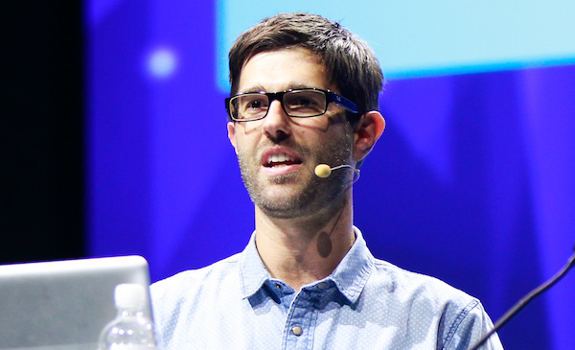
Sam Cavanagh asks young producers to share knowledge of their specialty (image: Andrew Jarvie)
Promote your show deliberately
Being approachable as ‘guys next door’ and being selective with public relations opportunities, gave their show a distinct image from the very beginning. “I think at the time, Kyle & Jackie O was the big show. They are celebrities, and everything about the show is celebrity culture. Maybe it was a way of articulating what our point of difference was, and what the guys were comfortable with.”
“If you’re The People’s Show, and you want to meet everyone at your parties, you don’t do certain things that put you up on a pedestal as an untouchable; different; special person. The one thing we did always make a point of is: if you’re gonna’ be in the press, make sure you’re talking about something funny about the show.” That’s why most of Hamish & Andy’s interviews are content-led.
Maintain your team functionality
Sam Cavanagh likes to apply a balanced content & team approach. He feels like facilitating an ongoing and solution-oriented dialogue within a radio show team is a key skill for every executive producer, even more in case of a struggling show. “We get frustrated with teams that are dysfunctional, but no one’s ever taught them to do anything otherwise. I would put 50% of my energy into the content and show, and 50% of my energy into the team and culture.”
“It’s about having really honest conversations with each other about ‘why did that work?’ or ‘why did that not work?’, ‘hey, when you do that, I feel this’, ‘you know, you might not realise, but every time you do that, it really shuts down everyone else’, or ‘hey, I would find it really helpful if you could support me a bit more in this way’, or whatever.”
Recognise your fellow producers
He also felt a good vibe towards himself within Fox FM and Southern Cross Austereo, where he got to share experience and inspire change on a group level. It began when Craig Bruce, who then was a content director, asked him to write a 1-page analysis of a success concept of Hamish & Andy for fellow programmers and producers within SCA. “It was really flattering, and you don’t really know what you know until you try and tell it someone else.”
It’s a tactic I now use with other young producers. ‘You use Twitter so well on your show — could you give us your Top 5 tips on Twitter that we can share with other producers?’ It’s a great way to share the learning, but it’s also a great way to say to that person: you’re being recognised for something that you’re doing here.”
“It took me a while to really listen what Fifi and Jules’ strengths where”
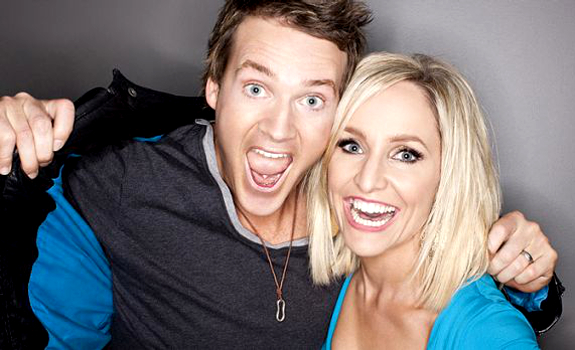
When Fifi Box and Jules Lund replaced Hamish Blake & Andy Lee, Sam Cavanagh applied a similar approach to this new show, hoping to have a shortcut to success (image: Sydney Morning Herald)
Guide your creative team
Sam Cavanagh thinks that a good producer first and foremost loves, understands and guides creativity. “It doesn’t mean you need to come to work with a sketch that you hand to Mick Molloy and go: ‘here’s a sketch I’ve written; could you please voice it?’, or need to have 10 fun topics that get on air every day.”
“But you need to see a good idea for what it is, and to be able to extend other people’s ideas and go: ‘hey, that’s great, but what if we did X, Y & Z?’ You need to hear a little moment in something bigger that you can pull out and do something else with. You need to be obsessed with ideas, but that doesn’t mean you have to have every idea yourself. Great producers see really good ideas in other people, and know how to bring out the best in them.”
Put your ego aside
Leading creatives feels like a delicate balance of taking charge and being modest: “You need to be confident enough to hold the space and say: ‘we’ve got three minutes before the end of the song, and we need to do X, Y and Z now’, but you also need to know: it’s never about you. You’re working with performers, and it’s their name on the show; they’re the ones that people are gonna’ hate or love. If your ego can’t handle that, then you can’t do the job.”
He observes that many executive producer are having conflicting ambtions: “If you’re obsessed with creativity, often you want to be the one performing it, and if you’re confident enough to hold the room with an Eddie McGuire or a Marty Sheargold and direct the team, often you would also have the personality that wants the attention.”
Acknowledge your team’s talents
When Hamish & Andy went from a daily drive time show to a weekly one on Fridays, Fifi and Jules became their Monday-Thursday replacement from February 2011. Cavanagh found those first six months to be challenging. “It took me a while to really listen what Fifi and Jules’ strengths where, and figure out how to bring out the best in them.”
Based on working with Hamish & Andy, he felt like his proven methods would get the new show on the road, so they could figure out everything else later. “I should have done a lot more listening and should have been a lot more patient, and not assume that, because I had more radio experience than Jules, I could show him how to do it.”
“Jim was this amazing role model”
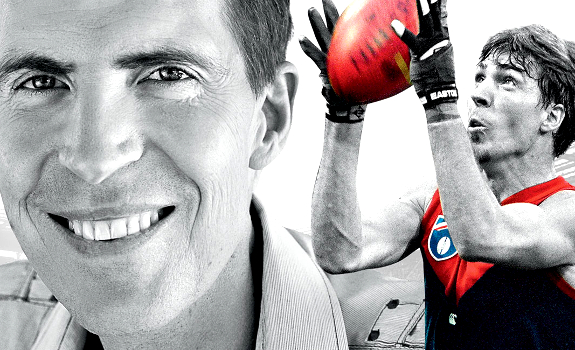
Sam Cavanagh honours his first mentor, late Australian sportsman Jim Stynes, who founded the Reach Foundation in a hope to inspire young people (image: Jim Stynes Foundation)
Produce your visuals professionally
After a slow start, Fifi and Jules eventually became successful in drive time, also thanks to Jules Lund’s strong affinity with social media and visual radio, which later influenced Southern Cross Austereo’s overall content strategy. They now create dedicated visual content; not just visualised radio content.
“A lot of the really visual, heavily produced executions that we do as a company now came from Jules questioning: ‘Why are you always holding a mic in every camera shot? Get a freaking 20-dollar lapel mic, and get out of the way. Why don’t you have any graphics, why aren’t you doing proper sound mixing, and why aren’t you lighting everything? People watching this online don’t listen to the radio show, necessarily’. He taught us a hell of a lot.”
Leverage your personal network
When Hamish & Andy ended their daily drive time show (for the first time) in 2010, they took the show on the road for a musical city farewell tour. “We got to Melbourne for the Friday, and figured out that U2 were in Melbourne at the same time. I thought: well, it’s worth a crack…” They had already done a phone interview with Bono and The Edge some time ago, which went really well, and got them in touch with the band’s amicable PR manager, Frances McCahon.
Sam Cavanagh reached out to her, knowing it was a long shot. But two days before the final show, she called that U2 had said yes, under the condition that would remain top secret and a fun surprise. Therefore, almost no one at the station could know. So on the big day, Fox FM’s GM came up to him, stumbling: “Sam… do you know… U2 are here…?”.
Be your best self
People who have strongly influenced his career include Matt Tilley, Melanie Murphy, and digital entrepreneur Clive Dickens, but one of Sam Cavanagh’s early mentors was someone outside radio; Australian footballer Jim Stynes. He and Jules Lund had met him through The Reach Foundation. “Jim was a huge mentor for me. I had a great childhood; great parents, but [I was] a little bit destructive, and certainly becoming attracted to some undesirable elements of society.”
“Jim was this amazing role model, who was masculine, but also thoughtful and kind; who was so strong and courageous, but also had such a huge heart. He taught a lot of us just how to grow up and be good men, who gave a shit about other people; not just themselves. He showed how important it was to be really successful and the best you can be, but also share as much as you can with other people who weren’t was fortunate as you were.”
Header image: Mumbrella

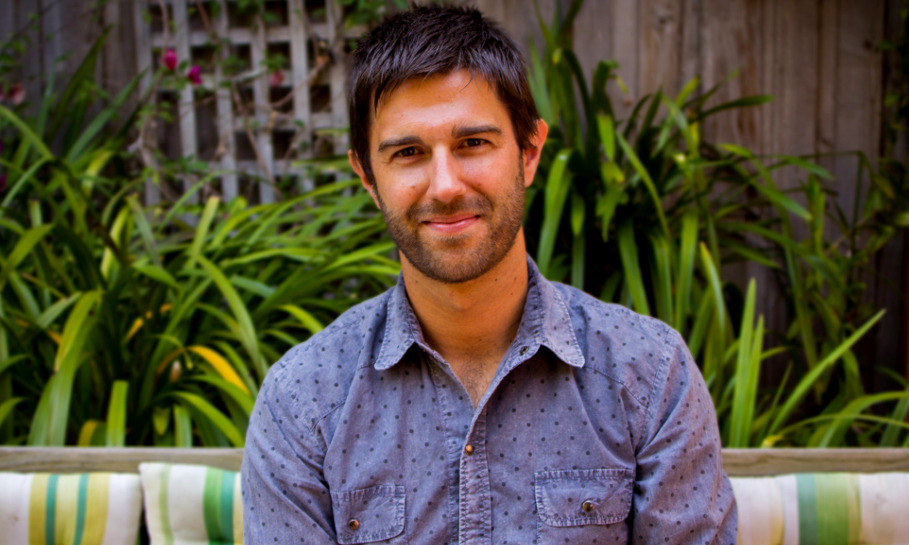




Add Your Comment